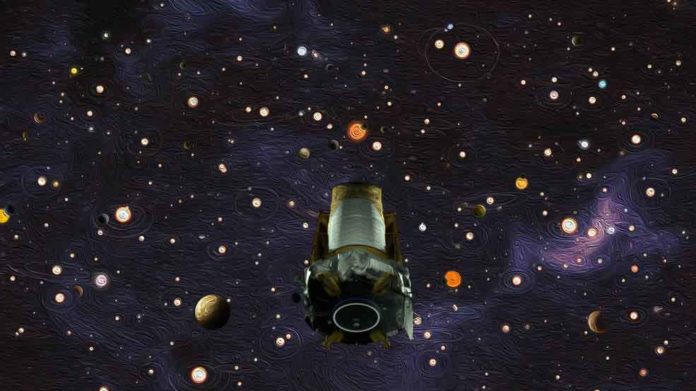Kepler was a space observatory launched by NASA to discover Earth-size planets orbiting other stars. Named after astronomer Johannes Kepler, the spacecraft was launched on March 7, 2009, into an Earth-trailing heliocentric orbit. After nine years of operation, the telescope on-board RCS fuel has been depleted, and NASA announced its retirement on October 30, 2018.
NASA has decided to retire the spacecraft within its current, safe orbit, away from Earth. Kepler leaves a legacy of more than 2,600 planet discoveries from outside our solar system, many of which could be promising places for life.
Thomas Zurbuchen, associate administrator of NASA’s Science Mission Directorate in Washington said, “As NASA’s first planet-hunting mission, Kepler has wildly exceeded all our expectations and paved the way for our exploration and search for life in the solar system and beyond. Not only did it show us how many planets could be out there, it sparked an entirely new and robust field of research that has taken the science community by storm. Its discoveries have shed a new light on our place in the universe, and illuminated the tantalizing mysteries and possibilities among the stars.”
Kepler discovered 2,681 planets outside our solar system and even more potential candidates. It showed us rocky worlds the size of Earth that, like Earth, might harbor life. It also unveiled incredible super-Earths: planets bigger than Earth but smaller than Neptune.
Kepler also found nature often produces jam-packed planetary systems, in some cases with so many planets orbiting close to their parent stars that our own inner solar system looks sparse by comparison.
Kepler mission’s founding principal investigator, William Borucki, now retired from NASA’s Ames Research Center in California’s Silicon Valley said, “When we started conceiving this mission 35 years ago we didn’t know of a single planet outside our solar system. Now that we know planets are everywhere, Kepler has set us on a new course that’s full of promise for future generations to explore our galaxy.”
Leslie Livesay, director for astronomy and physics at NASA’s Jet Propulsion Laboratory said, “The Kepler mission was based on a very innovative design. It was an extremely clever approach to doing this kind of science. There were definitely challenges, but Kepler had an extremely talented team of scientists and engineers who overcame them.”
Prior to resigning the spacecraft, researchers pushed Kepler to its maximum capacity, effectively finishing numerous observation campaigns downloading significant science data even after beginning alerts of low fuel. The most recent information, from Campaign 19, will supplement the data from NASA’s newest planet hunter, the Transiting Exoplanet Survey Satellite, propelled in April.
Jessie Dotson, Kepler’s project scientist at NASA’s Ames Research Center in California’s Silicon Valley said, “We know the spacecraft’s retirement isn’t the end of Kepler’s discoveries. I’m excited about the diverse discoveries that are yet to come from our data and how future missions will build upon Kepler’s results.”
